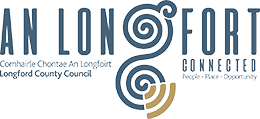
This project was assisted by Longford Local Community Development Committee, Longford Community Resources Clg. and Longford County Council through the Rural Development Programme (LEADER) 2014-2020 which is part-financed by the EU, "The European Agricultural Fund for Rural Development: Europe investing in rural areas" and the Department of Rural & Community Development. The European Commission.


